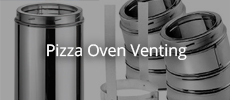so... we are building a 37" homebrew castable pizza oven... we have a paper mâché dome that we are gonna render the castable onto. I went to buy the fire clay locally and found that most places _call_ stuff fire clay, but it is really "fire clay blend" that is actually called fire mortar... they call it all kinds of things (seemed when I was at the store anything I mentioned he would say, yeah... that's this stuff -- fire mortar, refractory cement, stuff for pizza ovens, etc)... but, it seems to have a very similar recipe to homebrew... fire clay, sand, lime and portland (though, I can't find the ratios)... we are testing a small bit of it by building a dome on a helmet nacho helmet (maybe we'll use it as a small pot for a plant... or maybe to cook some mini bagel pizzas.. who knows)... but really, what am I lookin for... my plan was to see if it cracks a bunch... if it seems sturdy... to see what it looks like after being in the regular house oven at various temperatures (like put it through a mini curing cycle)... the fire mortar is "paragon" brand... am I gonna be screwed if I use this to render my whole dome?... I, of course, could alway switch my plans to bricks... I didn't wanna use bricks cause I didn't want the 2.5" thickness but I was only able to find 2.5" thick floor bricks (they were 18" squares so I couldn't pass up that convenience)... so maybe the brick dome is better for more even heating?
anyway... I think my questions are:
- if I see cracking, what is the fire mortar likely missing that homebrew would have had?
- if it cracks after a curing cycle, what then?
- is fire mortar just not the right thing at all and so I should give up and just use it to build the dome outta bricks?
thanks,
john
anyway... I think my questions are:
- if I see cracking, what is the fire mortar likely missing that homebrew would have had?
- if it cracks after a curing cycle, what then?
- is fire mortar just not the right thing at all and so I should give up and just use it to build the dome outta bricks?
thanks,
john





Comment